
- Home
- Travel Packages
- Top Destination
-
Travel Attraction
By Category
Top Attraction

- Travel Agents
- Car Rentals
- Hotels
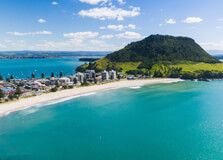
Papamoa Beach is a striking coastal gem in the Bay of Plenty, North Island, New Zealand. Stretching over 16 km between Mount Maunganui and the Kaituna River, it boasts broad, white sandy shores backed by dunes and pohutukawa trees, offering a relaxed, family-friendly vibe and stunning beach scenery :contentReference[oaicite:1]{index=1}. How to Reach Papamoa Beach, Bay Of Plenty By Car: A 15-minute drive east from Tauranga along the Te Tumu/NZ-2 highway leads directly to Papamoa Beach. Free street parking is available near Papamoa Domain adjacent to Tasman Holiday Park :contentReference[oaicite:2]{index=2}. By Bus: Local Bayhopper and school bus services connect Tauranga and Mount Maunganui with stops within easy walking distance of the beach. By Bike or Walking: The Te Awanui Trail cycleway runs through Papamoa, offering safe, scenic access from Mount Maunganui. It's also a pleasant walk from nearby suburbs :contentReference[oaicite:3]{index=3}. Weather at Papamoa Beach Papamoa has a temperate maritime climate with mild winters and warm summers. Average summer temperatures range from 24–28 °C, and winter temperatures range from 8–15 °C :contentReference[oaicite:4]{index=4}. Rainfall averages around 1,200 mm annually, peaking during winter, while sunny summer days are ideal for beach adventures :contentReference[oaicite:5]{index=5}. Bring sunscreen, hats, and layers to adapt to coastal breezes. Timings of Papamoa Beach As a public, open beach, Papamoa is accessible 24/7, year-round. Lifeguard patrols are seasonal, typically active during summer (November to March), ensuring swimming safety :contentReference[oaicite:6]{index=6}. Why Papamoa Beach is Famous Expansive white sand: A continuous 16 km stretch that rarely feels overcrowded, even in peak season :contentReference[oaicite:7]{index=7}. Scenic dunes & pohutukawa: Coastal flora and rolling dunes create a tranquil, natural atmosphere :contentReference[oaicite:8]{index=8}. Surf & swim-friendly: Big waves attract surfers, while calmer areas and lifeguards make it suitable for families :contentReference[oaicite:9]{index=9}. Cultural heritage: Named “Papamoa” (“fortified village”), it has Māori pā and hilltop pā sites, including Papamoa Hills Regional Park :contentReference[oaicite:10]{index=10}. Unique wildlife: Bronze whaler sharks frequent the shallows December–March, thrilling snorkelers and photographers :contentReference[oaicite:11]{index=11}. Entry and Visit Details There is no entry fee. Facilities include: Public toilets and changing areas at Papamoa Domain. Free roadside parking—arrive early in summer to secure a spot. Seasonal lifeguard patrols marked by red-and-yellow flags. Access to walking paths, cycle paths, and picnic areas. No swimming further from flagged areas due to undertows. History and Cultural Heritage Papamoa was first settled by Māori around 1400 CE. The name means “fortified village,” reflecting its strategic pā sites and fertile lands :contentReference[oaicite:12]{index=12}. Urban development began post-1988 after the Tauranga Harbour Bridge opened, connecting the area to Tauranga and Auckland :contentReference[oaicite:13]{index=13}. The Papamoa Hills Regional Park, established in 2003, contains archaeological sites and pā remains, with protected native vegetation and cultural trails co‑managed by local iwi :contentReference[oaicite:14]{index=14}. Things to Do at Papamoa Beach Surfing & swimming: Lessons and rentals available; swim between flags for safety :contentReference[oaicite:15]{index=15}. Beach walks: Long coastal strolls with views of Moturiki Island and Mount Maunganui. Fishing: Shore fishing for kahawai, snapper; boat trips from nearby marinas. Wildlife tours: Dolphin spotting, wildlife cruises and potential shark sightings :contentReference[oaicite:16]{index=16}. Culture & hiking: Guided walks in Papamoa Hills revealing Māori heritage :contentReference[oaicite:17]{index=17}. Cycling: Ride the scenic coastal trails via Te Awanui Pathway :contentReference[oaicite:18]{index=18}. Beach recreation: Volleyball, sunbathing, picnicking on sand or grassy dunes. Photography: Sunrise and sunset shots with reflections and dramatic skies :contentReference[oaicite:19]{index=19}. Interesting Facts Pāpāmoa Beach nudity is culturally accepted; unofficial clothing-optional zones exist :contentReference[oaicite:20]{index=20}. Bronze whaler sharks often swim knee-deep along the shore in warm months :contentReference[oaicite:21]{index=21}. Population surged after Harbour Bridge opened in 1988, transforming farmland into suburbs :contentReference[oaicite:22]{index=22}. Papamoa Plaza serves as the main shopping hub since 1997 :contentReference[oaicite:23]{index=23}. Pāpāmoa Hills Park protects more than 60 archaeological sites, plus thousands of planted native trees :contentReference[oaicite:24]{index=24}. Tips for Visiting Papamoa Beach Arrive early in summer for parking and peaceful sunrise views. Always swim between flags and respect lifeguard instructions. Wear sunscreen, sunglasses, a hat, and bring a windbreaker for breezy days :contentReference[oaicite:25]{index=25}. Bring a light rain jacket in winter—weather can shift quickly. If snorkeling, dive around Moturiki Island—rocky habitats harbor marine life. Don’t get spooked by sharks—bronze whalers rarely harm people but photo from safe distance is wise :contentReference[oaicite:26]{index=26}. Explore Papamoa Hills trail for cultural insight and panoramic vistas. Support local businesses—Papamoa Plaza, cafes, and food trucks enhance the beach experience. Join seasonal events like markets or cultural festivals at beach reserves.
Explore More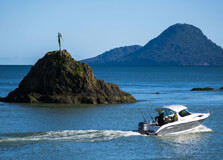
Whakatāne Beach, located at the mouth of the Whakatāne River in the Eastern Bay of Plenty, is a charming blend of river estuary and coastal environment. It sits alongside the vibrant town of Whakatāne and is flanked by scenic reserves, lively waterfront activities, and rich Māori cultural heritage. This beach offers something for everyone—from peaceful family outings to outdoor adventures. How to Reach Whakatāne Beach, Bay Of Plenty The beach is easily accessible from the town’s center: By Car: Whakatāne is about 90 km (1 h 10 min) east of Tauranga via SH2, and roughly 3 ¾ h from Auckland :contentReference[oaicite:1]{index=1}. By Bus: InterCity coaches stop at Whakatāne Visitor Centre. Local BayHopper buses and taxis connect to town and beachfront areas :contentReference[oaicite:2]{index=2}. By Air: Whakatāne Airport, a Category I heritage terminal, serves daily Air Chathams flights from Auckland :contentReference[oaicite:3]{index=3}. A short taxi or bus ride will take you to the shore. Weather at Whakatāne Beach Known as the “Sunshine Capital” of New Zealand, Whakatāne averages over 2,300 sunshine hours annually and maintains a mild temperate climate :contentReference[oaicite:4]{index=4}. Summers (Dec–Feb) are warm and sunny (25–28 °C), while winters (Jun–Aug) remain mild (rarely below 11 °C). Rainfall is moderate, making it ideal for coastal visits year-round :contentReference[oaicite:5]{index=5}. Timings of Whakatāne Beach As a public beach, it’s open 24/7. However, the best time to visit is daylight hours, especially when lifeguards are on duty at The Heads and local beaches. Boat and whale-spotting tours also depart during fair-weather periods, typically in daylight. Why Whakatāne Beach is Famous Whakatāne Beach is celebrated for: The Lady on the Rock: A bronze statue commemorating Wairaka’s legendary rescue of the Mataatua canoe, a local Māori heroine, installed in 1965 :contentReference[oaicite:6]{index=6}. River–Sea Mix: The junction of river and ocean ecosystems supports fishing, boating, and estuarine wildlife. Sunshine & Scenery: With abundant sunshine and scenic landscapes, the beach is great for relaxation and photography :contentReference[oaicite:7]{index=7}. Outdoor Lifestyle: Popular for walks, cycling, fishing, and access to nearby beaches and reserves :contentReference[oaicite:8]{index=8}. Entry and Visit Details Entry is free and open to the public. Amenities include: Public toilets and playgrounds near The Heads. Parks and riverside walkways like River Edge Park with skate parks and mini railways :contentReference[oaicite:9]{index=9}. Fishing wharves, swimming zones, and seasonal lifeguard patrols. Parking is available along The Strand and near the river mouth. History & Architecture The beach area is rich in Māori heritage: Wairaka Legend: Daughter of Chief Toroa, who famously paddled the drifting canoe Mataatua back to safety—a story honored by the beach’s statue :contentReference[oaicite:10]{index=10}. Māori Occupation: Settlement dates back to 1200 CE. Many pā (forts) are located nearby, including Whakatāne Heads and Kohi Point :contentReference[oaicite:11]{index=11}. European Growth: The town grew as a river port after 1880, with the draining of Rangitāiki swamp transforming the hinterland :contentReference[oaicite:12]{index=12}. Things to Do at Whakatāne Beach Walk the Riverbank: Riverside paths lead from The Heads through rose gardens, playgrounds, skate parks, to the town bridge :contentReference[oaicite:13]{index=13}. Head to Kohi Point: Coastal walking tracks with high-flying views towards Ohope, Otarawairere Bay and native bush :contentReference[oaicite:14]{index=14}. Surf & Swim: Popular surf breaks at Whakatāne Heads, surf school options, and patrolled swimming at The Heads :contentReference[oaicite:15]{index=15}. Fishing & Boating: Fishing from wharves or charter boats; surfcasting at river mouth :contentReference[oaicite:16]{index=16}. Dolphin Tours: Tours launch nearby offering swim-with-dolphin and seal-viewing experiences :contentReference[oaicite:17]{index=17}. Mountain Biking: Ride the riverside paths or head to Onepū Bike Park near town :contentReference[oaicite:18]{index=18}. Cultural & Museum Visits: Visit the Lady on the Rock, Te Koputu a Te Whanga a Toi museum, and heritage trails :contentReference[oaicite:19]{index=19}. Kiwi Night Walks: Discover native kiwi birds in nearby forests via guided evening walks :contentReference[oaicite:20]{index=20}. Facts about Whakatāne Beach Whakatāne often ranks as New Zealand’s sunniest town, with minimal rain and vibrant blue skies :contentReference[oaicite:21]{index=21}. The Lady on the Rock statue dates from 1965 and honors Māori ancestor Wairaka :contentReference[oaicite:22]{index=22}. The Whakatāne River was re-routed in the 1960s; its former loops can still be seen as lagoons :contentReference[oaicite:23]{index=23}. Around 40% of residents have Māori heritage, making Māori culture visibly rich here :contentReference[oaicite:24]{index=24}. The river, harbour, and beaches create a hub for outdoor activities, making it a lifestyle center :contentReference[oaicite:25]{index=25}. Tips for Visiting Whakatāne Beach Arrive early to get preferred parking and quieter experience. Swim between patrol flags, especially at The Heads. Bring sunscreen, water, insect repellent, and a jacket—weather may shift near beach/river junctions. For Kohi Point walks, check tide times; some sections are not passable at high tide :contentReference[oaicite:26]{index=26}. Book dolphin/kiwi/river tours in advance, especially in summer or high tourist season. Attend local events like Friday sunset markets along The Strand. Use bike rentals for scenic river/harbour loops and bush tracks :contentReference[oaicite:27]{index=27}.
Explore More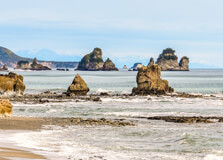
Punakaki Beach is located on the West Coast of New Zealand’s South Island, offering one of the most scenic and untouched coastal environments in the country. Known for its rugged beauty and dramatic landscapes, Punakaki Beach is a popular destination for nature lovers, photographers, and adventure seekers. The beach is part of the Paparoa National Park and is best known for its iconic Pancake Rocks, which are natural limestone formations that attract tourists from all over the world. How to Reach Punakaki Beach, West Coast Getting to Punakaki Beach is fairly straightforward, but it requires a bit of travel to reach this relatively remote area. The easiest way to get there is by car, as it is about a 45-minute drive north of Greymouth, a major town on the West Coast. From Greymouth, you can follow State Highway 6 north, and the turn-off to Punakaki is well-signposted. The drive offers spectacular views of the coastline and surrounding mountains, making it a journey worth taking in itself. If you're coming from further afield, the closest major cities are Christchurch (about 3 hours by car) and Nelson (about 4 hours by car). For those traveling without a car, buses run from Greymouth, but renting a car will give you the most flexibility to explore the area at your own pace. There are also some organized tours available from Greymouth that include stops at Punakaki Beach and other local attractions. Weather The weather at Punakaki Beach is typical of the West Coast of New Zealand, with mild temperatures and frequent rainfall throughout the year. Summer (December to February) brings warm temperatures ranging from 12°C to 20°C (54°F to 68°F), making it a great time for outdoor activities. However, the West Coast is known for its unpredictable weather, so visitors should always be prepared for rain, even during the summer months. Winter (June to August) is cooler, with temperatures ranging from 4°C to 12°C (39°F to 54°F). The beach and surrounding area can be quite dramatic during this time, with the waves crashing against the rocky coastline, creating an unforgettable sight. Visitors should be prepared for rain and strong winds, which are common during the winter months. It is advisable to pack waterproof clothing and sturdy footwear, especially if you're planning to explore the rugged trails in the area. Timing Punakaki Beach is open to visitors year-round, though the best time to visit is during the summer months (December to February) when the weather is warmer, and the beaches are more inviting. The spring and autumn months (September to November and March to May) are also excellent times to visit, as the weather is mild, and the area is less crowded. Winter, while still beautiful, brings colder and wetter conditions, so if you're looking to avoid the chill, it's better to visit during the warmer months. Why Famous for Punakaki Beach, West Coast? Punakaki Beach is famous for its spectacular Pancake Rocks and blowholes, which are some of the most striking natural formations on the West Coast. The Pancake Rocks are unique limestone formations that have been shaped over millions of years by erosion and weathering. The rocks are layered, giving them the appearance of a stack of pancakes, hence the name. The blowholes, located at the base of the rocks, are particularly impressive during high tide when water shoots through the cracks in the rocks, creating a dramatic display of natural power. The area surrounding Punakaki Beach is part of the Paparoa National Park, which is known for its diverse ecosystems, including rainforests, coastal cliffs, and wetlands. The park is a haven for wildlife, and visitors may encounter native bird species such as the kea, tui, and bellbird. Punakaki Beach offers a peaceful retreat away from the hustle and bustle of more tourist-heavy areas on the South Island, making it an ideal spot for nature lovers and outdoor enthusiasts. Entry and Visit Details about Punakaki Beach, West Coast Entry to Punakaki Beach itself is free, as it is part of the public land in the Paparoa National Park. Visitors can access the beach from the main viewing area near the Pancake Rocks, where there are walking tracks and viewpoints. The park is open year-round, and while there are no specific hours for visiting the beach itself, the nearby visitor center at the Pancake Rocks is typically open from 8:30 AM to 5:00 PM daily, offering information and guidance about the area. While the beach and the Pancake Rocks are free to visit, some activities, such as guided tours or specific walking tracks, may require a fee. The visitor center provides maps and details about the various trails and points of interest in the area. It’s a good idea to stop by the center to learn more about the natural history and geology of the area before embarking on your exploration. History and Architecture The history of Punakaki Beach is deeply tied to the natural forces that created the Pancake Rocks. The limestone formations were formed millions of years ago from the remains of marine creatures that settled on the ocean floor. Over time, the land was uplifted, and erosion shaped the rocks into the distinct layers that we see today. The blowholes are created when water from the sea is forced through narrow gaps in the rocks, creating spectacular geyser-like bursts of water. The area around Punakaki Beach was historically used by Māori as a source of food, particularly for gathering shellfish and fishing. The first European settlers arrived in the area in the 19th century, and the West Coast quickly became a center for gold mining. Today, the area is protected as part of the Paparoa National Park, ensuring that the natural beauty of the region is preserved for future generations. Things to Do in Punakaki Beach There are plenty of activities to enjoy around Punakaki Beach, whether you're an adventure seeker or someone looking to relax and take in the scenery. Some of the best things to do include: Visit Pancake Rocks and Blowholes: The main attraction at Punakaki Beach, the Pancake Rocks are an impressive sight. Visit during high tide to witness the blowholes in action as water shoots through the rocks. Explore the Walkways: There are several walking tracks in the area, including short walks to the Pancake Rocks and more extended hikes that take you through the surrounding rainforest and coastal areas. Photography: The rugged coastline, dramatic blowholes, and stunning sunsets make Punakaki Beach a photographer’s paradise. Capture the natural beauty of the beach, rocks, and wildlife. Wildlife Watching: The region is home to a variety of bird species, including the iconic kea and tui. Bring binoculars for birdwatching or a camera to capture the beautiful native wildlife. Beachcombing and Relaxation: If you’re in the mood to relax, Punakaki Beach is a great place to enjoy the peaceful surroundings, have a picnic, or simply unwind and listen to the sound of the waves. Facts about Punakaki Beach Punakaki Beach is located in the Paparoa National Park, which covers 3,200 hectares of stunning coastal scenery. The Pancake Rocks are composed of limestone, and their layered appearance is due to the slow process of compression and erosion over millions of years. The blowholes are most active during high tide, creating spectacular geyser-like bursts of water. The area is also a haven for native wildlife, with several bird species inhabiting the region, including the kea and the bellbird. Tips for Visiting Punakaki Beach Be prepared for unpredictable weather. The West Coast is known for its rain, so pack waterproof clothing and sturdy footwear for walking. Visit during high tide for the best view of the blowholes in action. If you're planning to walk the tracks, make sure to wear comfortable shoes, as some of the paths can be uneven or muddy. Bring a camera to capture the stunning scenery, especially at sunrise or sunset when the light creates beautiful effects over the rocks and coastline. Respect the natural environment and follow Leave No Trace principles while exploring the area.
Explore More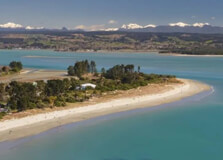
Tahunanui Beach is one of Nelson’s most beloved and popular beaches, located just a short distance from the city center. With its golden sands, clear waters, and family-friendly atmosphere, Tahunanui Beach is a perfect spot for locals and visitors alike to relax, enjoy outdoor activities, or simply take in the stunning coastal views. The beach is part of the larger Tahunanui area, known for its picturesque surroundings, vibrant community, and variety of recreational activities. Whether you're swimming, sunbathing, or exploring the nearby parks, Tahunanui Beach offers something for everyone. How to Reach Tahunanui Beach, Nelson Tahunanui Beach is easily accessible from Nelson city, located just 10 minutes by car to the south. From the Nelson city center, head west on Rutherford Street, turn onto Waimea Road, and follow the signs to Tahunanui. The road is well-maintained and offers beautiful views of the surrounding area as you make your way to the beach. If you're using public transportation, Nelson’s local bus network has routes that pass through Tahunanui, making it easy to reach the beach. Alternatively, you can rent a bike, as the city has dedicated cycling paths, or simply walk from central Nelson if you enjoy a short stroll through the area. For those flying into Nelson, the Nelson Airport is only about a 10-minute drive from Tahunanui Beach, offering easy access for international and domestic visitors alike. Weather The weather at Tahunanui Beach is typically mild, with a Mediterranean climate that makes it an appealing destination year-round. Summers (December to February) are warm and pleasant, with temperatures ranging from 20°C to 25°C (68°F to 77°F). The beach is at its busiest during these months, as people flock to the area to swim, sunbathe, and enjoy water sports. Autumn (March to May) offers milder temperatures, usually ranging from 10°C to 20°C (50°F to 68°F), and is a great time for beach walks, kite flying, and exploring the nearby parks. Winter (June to August) is cooler, with temperatures averaging between 5°C and 15°C (41°F and 59°F). While it’s too cold for swimming, winter visitors can still enjoy the beach’s beauty, go for walks, or participate in activities like beachcombing and birdwatching. Spring (September to November) is another fantastic time to visit, with temperatures ranging from 10°C to 20°C (50°F to 68°F) and less rain. The area’s gardens begin to bloom, adding extra charm to the beach and surrounding areas. Timing Tahunanui Beach is open to the public year-round, making it a perfect spot for beach lovers no matter the season. However, the best time to visit depends on the type of experience you are looking for. Summer is the peak season when the beach is bustling with activity, and all amenities are open for business. If you prefer a quieter experience with fewer crowds, visiting during the off-peak seasons, such as autumn or spring, is ideal. If you're planning to visit for a specific activity, such as swimming, sunbathing, or playing beach volleyball, summer months from December to February are the most favorable. For nature walks, picnicking, or exploring nearby attractions, the months of March to May or September to November are perfect due to the moderate weather. Why Famous for Tahunanui Beach, Nelson? Tahunanui Beach is famous for its beautiful sandy shoreline, shallow waters, and family-friendly atmosphere, making it a top destination in Nelson. The beach is popular for its safe swimming conditions, with lifeguards on duty during peak summer months, making it an ideal location for families with children. Additionally, the beach offers excellent facilities such as picnic areas, playgrounds, and barbecue facilities, further enhancing its appeal for visitors. The beach is also known for its various recreational opportunities. It's a great spot for water sports like kayaking, windsurfing, and paddleboarding, as the shallow waters make it suitable for beginners and experienced enthusiasts alike. Tahunanui Beach is also home to a scenic walkway that leads to nearby nature reserves, where visitors can enjoy birdwatching and explore the region’s diverse flora and fauna. With its breathtaking views, sheltered waters, and close proximity to the Nelson city center, Tahunanui Beach has become one of the region’s most popular destinations for both relaxation and adventure. Entry and Visit Details about Tahunanui Beach, Nelson Access to Tahunanui Beach is free for everyone, making it an affordable option for locals and tourists. Visitors can enjoy the beach at any time of day, with the area open for walks, picnics, and water activities. During summer, the beach is patrolled by lifeguards, ensuring a safe environment for swimmers and beachgoers. There are also plenty of nearby amenities, including cafes, shops, and restaurants, where visitors can grab a bite to eat or enjoy a drink while taking in the beach views. There are several parking spaces available around the beach area, with both free and paid parking options. For those looking to stay longer, there are accommodation options in and around Tahunanui, from motels to holiday parks, as well as campsites for those who enjoy outdoor living. History and Architecture Historically, Tahunanui Beach was an important settlement area for the Māori people, who utilized the coastline for fishing and gathering food from the sea. Early European settlers were drawn to the region because of its fertile land and access to the beach, eventually establishing the community that exists today. Over the years, Tahunanui has developed into a popular beachside neighborhood, with an expanding number of businesses and services catering to both residents and visitors. The architectural landscape of Tahunanui is predominantly residential, with a mix of traditional Kiwi bungalows and more modern homes. Over the years, the area has been developed to cater to the influx of tourists, particularly in the tourism and hospitality sectors. Today, the area’s vibrant atmosphere combines a relaxed beach vibe with modern amenities and well-maintained infrastructure. Things to Do in Tahunanui Beach, Nelson Whether you're an adventurer or someone who prefers a more laid-back experience, there are plenty of activities to enjoy at Tahunanui Beach: Swimming: The shallow, calm waters of the beach make it an excellent spot for swimming, especially for families with young children. Water Sports: The beach is a popular location for windsurfing, kayaking, paddleboarding, and sailing. You can rent equipment from local vendors or join a group lesson to try something new. Walking and Jogging: Take a walk along the beachfront promenade or explore the nearby walking tracks, such as the Tahunanui Beach Walkway that leads to nature reserves and scenic views. Picnicking and Barbecuing: The beach has dedicated picnic areas and BBQ facilities, making it perfect for a relaxing afternoon with family and friends. Playing Beach Volleyball: There are several beach volleyball courts set up on the sand for visitors to enjoy a game of volleyball with friends or fellow beachgoers. Fishing: If you prefer a quieter activity, try fishing off the beach or from a nearby pier. Facts about Tahunanui Beach, Nelson Tahunanui Beach is one of the most popular beaches in Nelson, attracting both locals and international visitors. The beach is known for its shallow waters, making it safe for families with young children. Tahunanui Beach is located just a 10-minute drive from the Nelson city center, making it easily accessible for tourists. It is a great location for water sports, with windsurfing, kayaking, and paddleboarding being popular activities. The beach has ample facilities, including free and paid parking, picnic areas, and BBQ stations. Tips for Visiting Tahunanui Beach, Nelson Arrive Early in Summer: If you want to secure a good spot on the beach during the busy summer months, it’s best to arrive early in the day. Bring Sunscreen: The sun can be strong, so make sure to apply sunscreen and wear a hat to protect yourself from UV rays. Check Water Conditions: While the beach is generally safe for swimming, always check the water conditions before entering, especially after storms or heavy rainfall. Respect the Environment: Keep the beach clean by taking your trash with you and respecting local wildlife. Bring Water and Snacks: While there are cafes nearby, it's always a good idea to bring your own water and snacks for the day, especially if you're planning to stay for a while.
Explore More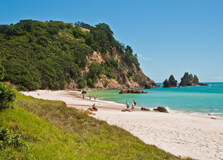
Otama Beach is a secluded, north-facing 2 km stretch of pristine white sand located approximately 20 km north of Whitianga on the northeast coast of the Coromandel Peninsula, New Zealand :contentReference[oaicite:1]{index=1}. Backed by protected dunes and wetlands, it offers a rare and undeveloped coastal paradise—ideal for anyone seeking serenity, natural beauty, and unspoiled environments. How to Reach Otama Beach, Whitianga From Whitianga, take State Highway 25 north towards Kuaotunu. Turn right onto Black Jack Road, a sealed then gravel rural route for about 3 km :contentReference[oaicite:2]{index=2}. Proceed approximately 1.5 km down the gravel section until reaching the parking area at the western end of Otama Beach :contentReference[oaicite:3]{index=3}. Be cautious navigating the narrow, winding gravel segments, as farm vehicles may occasionally pass :contentReference[oaicite:4]{index=4}. Weather The Coromandel’s coastal climate means Otama enjoys mild-to-warm summers and cool winters. Summer days (December–February) average around 25 °C, while winter days (June–August) remain comfortable at around 15 °C. Waters are generally calm, especially at low tide—perfect for swimming and paddling :contentReference[oaicite:5]{index=5}. No official weather station sits at Otama, but typical Waikato regional trends apply. Timing – Best to Visit Otama Beach is open year‑round, with no entry fee. High season (December–March) brings warmer temperatures, long daylight, and near-secluded beach access. Off-season (April–November) is quieter, washuregarding cooler temperatures. Visitors should check low-tide windows for tide‑pool exploration and avoid dairy‑busy school holidays :contentReference[oaicite:6]{index=6}. Why Famous for Otama Beach, Whitianga? Otama’s popularity stems from its pure white sands that “squeak” underfoot, calm crystal-clear waters, and the contrast between wild dune ecosystems and sheltered lagoon areas :contentReference[oaicite:7]{index=7}. Its whisper‑quiet atmosphere and minimal development—very few houses, mostly holiday homes—give it a pristine, private character :contentReference[oaicite:8]{index=8}. Entry and Visit Details about Otama Beach, Whitianga No entry fees or gates—Otama is a public beach. Facilities are minimal: free parking, no shops, limited cellphone coverage, and no patrolling :contentReference[oaicite:9]{index=9}. A toilet is available at the eastern end near the reserve :contentReference[oaicite:10]{index=10}. Bring your own food, water, and supplies (e.g. picnic, sunscreen)—the nearest facilities are in Kuaotunu. History & Cultural Significance “Otama” means “Place of Tama” in Māori :contentReference[oaicite:11]{index=11}. The area holds rich cultural heritage tied to Ngāti Hei; archaeological evidence shows pā (fortified villages) on local headlands, including at eastern cliffs (Motuhua Point) and dunes :contentReference[oaicite:12]{index=12}. Today, the Otama Reserves Group and Department of Conservation co-manage reserves to preserve dunes, wetlands, and archaeological sites :contentReference[oaicite:13]{index=13}. Architecture & Reserve Facilities There are no modern structures on the beach itself—only a small swing under pohutukawa trees at the eastern end :contentReference[oaicite:14]{index=14}. The Otama Beach Recreational Reserve (13.8 ha) occupies the eastern end and features a car park, walking track, toilets, and wetland outlook :contentReference[oaicite:15]{index=15}. Gravel Black Jack Road leads to a scenic reserve with dune ecosystems and protected flora and fauna :contentReference[oaicite:16]{index=16}. Things to Do Visitors to Otama can enjoy: Swimming and wading safely in calm water; best at low tide due to shallow lagoon areas :contentReference[oaicite:17]{index=17}. Snorkelling around rocky points for marine life: fish, starfish, kina, stingrays, even small sharks :contentReference[oaicite:18]{index=18}. Jumping off the “rock jump” at the western end and enjoying the rope swing under pohutukawa shade :contentReference[oaicite:19]{index=19}. Walking through dunes and along a 5 km beach track (~2 hours return) :contentReference[oaicite:20]{index=20}. Birdwatching in protected dune-wetland habitat—keep an eye out for dotterels, oyster catchers, bitterns, and fernbirds :contentReference[oaicite:21]{index=21}. Photography—dramatic pohutukawa, dunes, cliffs, and estuary scenery :contentReference[oaicite:22]{index=22}. Beachcombing—search for shells and admire the squeaky sand :contentReference[oaicite:23]{index=23}. Facts about Otama Beach, Whitianga 2 km long, north‑facing white‑sand beach backed by dunes :contentReference[oaicite:24]{index=24}. Minimal development—only holiday homes behind dunes :contentReference[oaicite:25]{index=25}. Protected dune and wetland ecosystems support rare plants and endangered dotterels :contentReference[oaicite:26]{index=26}. Public reserve areas total over 25 ha, including cultural-pa sites :contentReference[oaicite:27]{index=27}. Facilities include unpatrolled water, one pit‑toilet, and walking tracks but no shops :contentReference[oaicite:28]{index=28}. Famous for its squeaky sand and turquoise water clarity :contentReference[oaicite:29]{index=29}. Tips for Visiting Otama Beach, Whitianga Arrive early during summer to find parking and enjoy solitude. Visit at low tide for swimming, snorkelling, estuary exploration, and rock jumping :contentReference[oaicite:30]{index=30}. Respect nesting areas—avoid taped zones for dotterels and oyster catchers :contentReference[oaicite:31]{index=31}. Dogs are allowed but must stay under control—nesting birds need space :contentReference[oaicite:32]{index=32}. Bring water, snacks, shade, sun protection, and check tide tables; no cell coverage or lifeguards :contentReference[oaicite:33]{index=33}. Check car park signboards for tide warnings and track guidance. Stay on marked tracks to protect dunes and archaeological sites. Conclusion Otama Beach near Whitianga remains one of the Coromandel’s most enchanting and untouched coastal retreats. Its stunning dunes, clear water, and rich biodiversity—complemented by cultural significance—create a rare escape from commercial beaches. Whether you’re swimming, exploring, bird‑watching, or simply basking in silence, Otama delivers an authentic and rejuvenating beach experience. Follow the simple tips above and respect its fragile ecosystems—you’ll leave with memories of a truly special New Zealand gem.
Explore More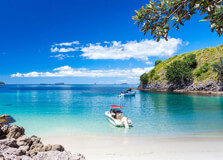
Whitianga Beach, located in the charming town of Whitianga on the Coromandel Peninsula, is a picturesque destination offering a blend of natural beauty and recreational activities. This east-facing beach stretches approximately 5 kilometers along Mercury Bay, providing ample space for relaxation and exploration. How to Reach Whitianga Beach, Whitianga Whitianga Beach is easily accessible from the town center, situated at the southern end of the beach. Visitors can reach the beach by walking, cycling, or driving from various accommodations and eateries in Whitianga. For those traveling from Auckland, Whitianga is approximately a 3-hour drive, covering a distance of about 191 kilometers via State Highway 25. Public transportation options include InterCity buses and Go Kiwi Shuttle services, which connect Whitianga to other parts of the Coromandel Peninsula and the North Island. Weather Whitianga enjoys a temperate maritime climate, characterized by mild winters and warm summers. Average summer temperatures range from 20°C to 25°C, while winter temperatures typically hover between 10°C and 15°C. The beach is a popular spot year-round, with summer months attracting more visitors for swimming and sunbathing. For the latest weather updates, it's advisable to check local forecasts before planning your visit. Timing Whitianga Beach is open to the public year-round, with no specific opening or closing hours. However, it's recommended to visit during daylight hours for safety and to fully enjoy the beach's amenities. The town center offers various services, including cafes and shops, which are typically open from early morning until late afternoon, providing convenient access to refreshments and supplies. Why Famous for Whitianga Beach, Whitianga? Whitianga Beach is renowned for its pristine white sands and clear blue waters, making it an ideal destination for beachgoers. The beach is popular for swimming, picnicking, and leisurely walks along the shoreline. Its location within Mercury Bay offers stunning views of the surrounding landscapes, including nearby islands and volcanic formations. The beach's accessibility and family-friendly environment contribute to its popularity among both locals and tourists. Entry and Visit Details about Whitianga Beach, Whitianga Access to Whitianga Beach is free, with no entry fees required. The beach is open to the public at all times, allowing visitors to enjoy its natural beauty and recreational opportunities. Facilities near the beach include public restrooms, picnic areas, and parking spaces. Visitors are encouraged to adhere to local regulations and maintain the cleanliness of the beach by disposing of waste responsibly. History & Architecture Whitianga Beach is situated in a region with a rich history. The town of Whitianga was historically a center for boat building, kauri milling, flax milling, gold mining, and gum digging. Over a period of sixty years, it is estimated that over 500 million feet of kauri timber was exported from the Whitianga district. The beach itself has witnessed the evolution of the town from a bustling port to a tranquil seaside destination. While the beach's natural landscape remains its primary attraction, the surrounding town center features a mix of historic and contemporary architecture, reflecting the area's development over time. Things to Do at Whitianga Beach Visitors to Whitianga Beach can engage in a variety of activities: Swimming and Sunbathing: Enjoy the warm waters and relax on the sandy shores. Fishing: The beach is a popular spot for surfcasting and pipi harvesting. Walking and Cycling: Explore the beach and surrounding areas on foot or by bike. Picnicking: Utilize the picnic areas to enjoy meals with scenic views. Photography: Capture the stunning landscapes and seascapes. For those interested in exploring further, nearby attractions include the Mercury Bay Museum, offering insights into the region's history, and the Whitianga Wharf, a hub for local maritime activities. Facts about Whitianga Beach, Whitianga The beach spans approximately 5 kilometers along Mercury Bay. It is an east-facing beach, offering beautiful sunrises over the Pacific Ocean. The beach is named after the Royal Navy ship Buffalo, which was wrecked during a storm while anchored in Mercury Bay. Buffalo Beach is a popular spot for swimming, fishing, and picnicking. The beach is located near the town center, providing easy access to various amenities and services. Tips for Visiting Whitianga Beach, Whitianga Sun Protection: Apply sunscreen and wear protective clothing, as the sun can be intense. Stay Hydrated: Bring water to stay hydrated, especially during warmer months. Respect Local Wildlife: Avoid disturbing marine life and seabirds in the area. Clean Up: Dispose of trash responsibly to maintain the beach's cleanliness. Check Tides: Be aware of tide times if planning activities like fishing or walking along the shoreline. Conclusion Whitianga Beach offers a serene and picturesque setting for visitors seeking relaxation and outdoor activities. Its natural beauty, combined with the town's rich history and accessible amenities, makes it a must-visit destination on the Coromandel Peninsula. Whether you're looking to swim, fish, or simply enjoy the coastal scenery, Whitianga Beach provides a welcoming environment for all.
Explore More